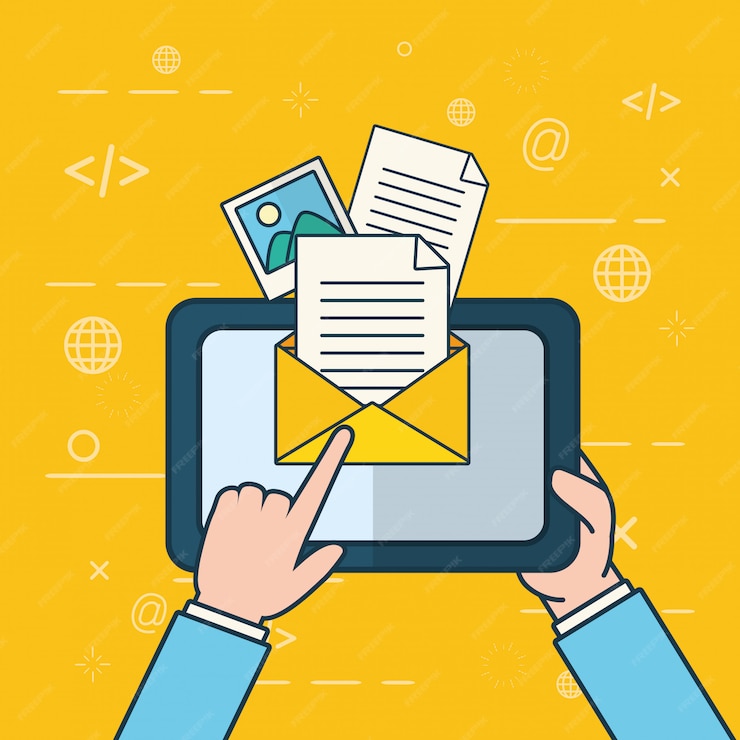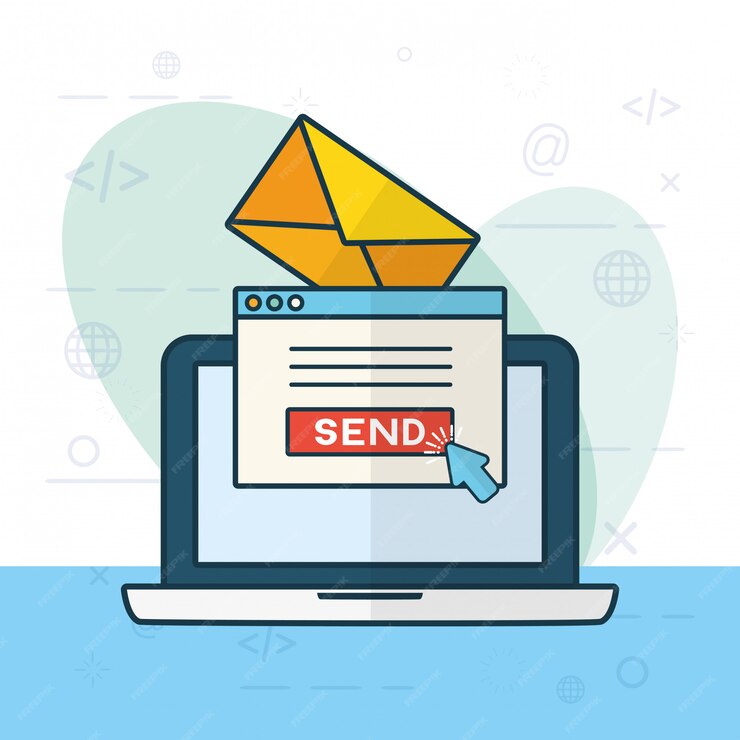Email marketing is a powerful tool for reaching out to potential customers and building relationships with them. However, in order to be effective and reach your email prospects, it’s important to send your emails at the right time. In this article, we’ll explore the best practices for determining the perfect time to reach your email prospects, so you can increase your chances of engagement and ultimately drive more sales.
First, let’s discuss some of the factors to consider when determining the best time to send emails. These include the industry you’re in, the size of your company, and the recipient’s time zone. For example, if you’re a B2B company in the technology industry, you may want to send emails during business hours. This is when decision-makers are more likely to be at their desks. On the other hand, if you’re a B2C company in the retail industry, you may want to send emails during non-work hours when consumers are more likely to be browsing online.
Another factor to consider is the recipient’s time zone. If you’re sending emails to a global audience, it’s important to take into account the time difference and schedule your emails accordingly. For example, if you’re sending an email to a recipient in Australia, schedule it during their business hours. It’s less effective to send it during the middle of the night when they’re likely to be asleep.
Analyze your email engagement data
There are also a number of tools and resources available that can help you analyze your email engagement data. For example, you can use email marketing platforms like Mailchimp, Mailbutler or Constant Contact to track open and click-through rates, and then use that information to optimize your email send times. Additionally, you can use Google Analytics to track how many conversions your emails are generating. This can help you determine whether or not your timing strategy is working.
When it comes to best practices for email content, subject lines, and call-to-action, there are a few key things to keep in mind. First, your subject line should be clear, concise, and compelling. It should also be personalized if possible. Second, your email content should be engaging and informative, and it should include a clear call to action. And finally, your call to action should be easy to find and take.

There are also several examples of successful email campaigns and their timing strategies worth looking at. This can help you get a better idea of what works. For example, a study by CoSchedule found that the best time to reach your email prospects is on weekdays between 10 am and 2 pm. Another study by Experian found that the best time to send emails is on Thursdays and Tuesdays at 10 am. A study by Omnisend found the best time to send emails is on weekends between 12 pm and 6 pm.

Finally, it’s important to test and optimize your email send times. This can be done by A/B testing different send times and analyzing the results. For example, you can send one version of your email to a group of recipients at 8 am, and another version of your email to a different group of recipients at 12 pm. Then, you can compare the open and click-through rates to see which send time performed better.
Best time to send B2C emails
When it comes to B2C (business-to-consumer) emails, the best time to send them is during non-work hours. According to a study by Experian, the highest open rates for B2C emails occur on weekends, specifically on Sundays at 6 pm. Additionally, research by CoSchedule found that the best days to send B2C emails are Saturdays and Sundays. This is because consumers are more likely to be browsing online and checking their email during their free time. It’s also important to take into account the recipient’s time zone and schedule your emails accordingly.
Best time to send B2B emails
On the other hand, the best time to send B2B (business-to-business) emails is during business hours. A study by Omnisend found that the highest open rates for B2B emails occur on weekdays between 10 am and 2 pm. Additionally, research by HubSpot found that the best days to send B2B emails are Thursdays and Tuesdays. This is because decision-makers are more likely to be at their desks during these times and able to engage with your email. As with B2C emails, it’s important to take into account the recipient’s time zone and schedule your emails accordingly.
How to get higher email open rates?
One way to get higher email open rates is to personalize your emails as much as possible. This can include using the recipient’s name in the subject line or the body of the email or segmenting your email list based on the recipient’s interests or behavior. Additionally, using a clear and compelling subject line that grabs the recipient’s attention can also increase open rates. It’s also important to optimize your email for mobile, as more and more people are checking their emails on their smartphones.
Which is the worst day to send your campaigns?
According to research by Moosend, the worst day to send your email campaigns is on Mondays. This is because people are often swamped with work and personal tasks on Mondays, making it less likely that they’ll engage with your email. Additionally, Fridays and weekends also tend to have lower open and click-through rates.
Which is the best day to send an email campaign?
Research by Moosend found that the best day to reach your email prospects is Thursdays. This is because people are more likely to be in a good mood, and they’re also more likely to be planning ahead for the weekend. Additionally, Tuesdays also tend to have high open and click-through rates.
Email benchmarks for different industries
Email benchmarks and trends can vary depending on the industry. For example, a study by Moosend found that the retail industry has an average open rate of 22.86%, while the finance industry has an average open rate of 18.26%. It’s important to look at email benchmarks for your specific industry to get a better idea of what to expect and to optimize your campaigns accordingly.
How to get more opens from your email subject lines
Personalizing subject lines is another effective way to increase open rates. By including the recipient’s name, location, or other personal details in the subject line, you can make the email feel more relevant and personal. This can increase the chances of the email being opened as the recipient is more likely to feel a connection.
Personalization can also be done by segmenting your email list based on the recipient’s interests or behavior. For example, if a recipient has previously shown interest in a specific product or service, you can personalize the subject line with the product or service name, making the email more relevant and valuable for the recipient.
Additionally, using action words, creating a sense of urgency, and using emojis in the subject line can also make the email more appealing and increase the chances of it being opened. A subject line like “Don’t miss out on our limited time offer” or “Last chance to save on your purchase” creates a sense of urgency, while a subject line like “🔥HOT DEAL ALERT🔥” with emojis can make the email stand out in the recipient’s inbox.
Segmenting your email list by time zone
This is an effective way to ensure that your emails are sent at the optimal time for each individual recipient. Start by dividing your email list into different time zones. This way you can ensure that your emails are being sent during the recipient’s local business hours. This can significantly increase the chances of your emails being opened and read. Recipients are more likely to engage with your email if it arrives during a time when they are likely to be checking their inboxes.
Schedule every email at the best time with Mailbutler
Mailbutler is a tool that can help you schedule your emails at the best time. It allows you to schedule your emails in advance, so they’re sent at the optimal time for your recipients. Additionally, it also allows you to track your email engagement rates.
How to measure the performance of your email sends
Measuring the performance of your email sends is crucial for determining the success of your email marketing campaigns. There are several key metrics to track including open rates, click-through rates, and conversion rates.
Open rates: tells you how many people opened your email.
Click-through rates: tells you how many people clicked on a link in your email.
Conversion rates: tells you how many people completed a desired action, such as making a purchase or signing up for a newsletter.
To track these metrics, you can use tools such as Google Analytics or your email marketing platform’s built-in analytics. Additionally, you can also A/B test different elements of your email, such as subject lines and send times. This will help you see which strategies result in the best performance.
Why email matters for your business
Email is an essential tool for any business looking to build relationships with potential customers and drive sales. It allows you to reach your email prospects in a cost-effective way. It also allows you to personalize your message to different segments of your audience. Email marketing can also help you generate leads, increase website traffic and conversions, and ultimately increase revenue. Additionally, Email marketing can also be automated, which can save you a lot of time and energy. Overall, email marketing is a powerful and versatile tool that can help any business achieve its marketing and sales goals
Summing up
Determining the perfect time to reach your email prospects is essential for the success of your email marketing campaigns. By taking into account factors such as industry, company size, and recipient’s time zone, and using tools and resources to analyze engagement data, you can increase your chances of engagement and ultimately drive more sales. By following the best practices for email content, subject lines and call-to-action, and testing and optimizing send times, you can improve your email marketing campaigns and achieve better results.




































